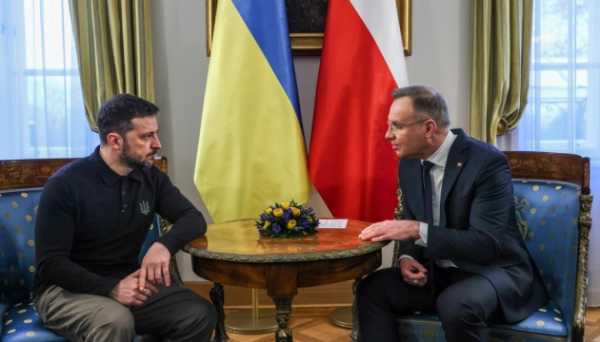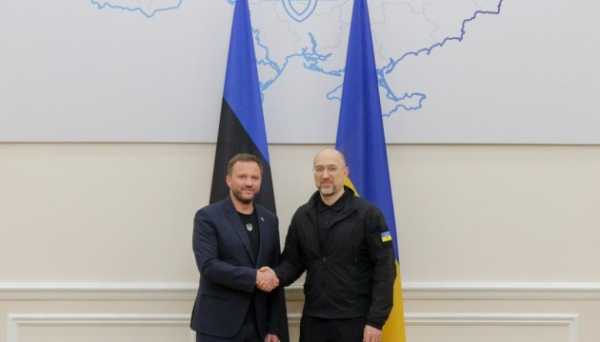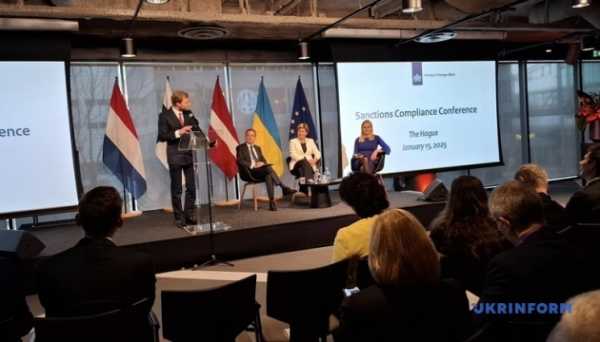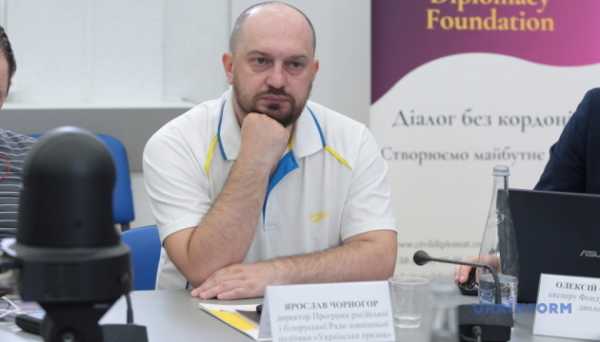Disarmament of Ukraine
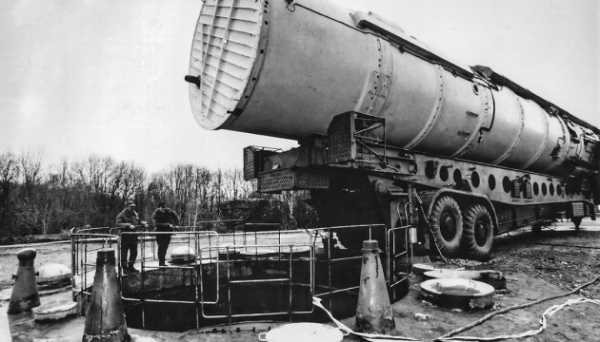
Ukrinform is publishing a series of materials based on archival data and photographs from the agency's photo archive, created by several generations of our employees.
The first of the three dozen American Abrams tanks we were promised have already arrived in Ukraine. President Zelensky officially confirmed this: "Abrams are already in Ukraine and are preparing to strengthen our brigades. I am grateful to the allies for fulfilling the agreements." Immediately after the President's visit to the United States, it was reported that the United States was also ready to provide the long-awaited ATACMS missiles with a range of up to 300 kilometers.
…The sad irony is that three decades ago Ukraine had huge arsenals of its own weapons, much of which we got rid of not on our own initiative, wanting to make money on it, but also under the imperative demands of our current allies. And now what? And now the logisticians of the Ramstein Coalition are searching everywhere for ammunition for Soviet-style weapons, which are still in use by the Armed Forces of Ukraine…
The funds of the National News Agency "Ukrinform" include thousands of unique photographic materials that illustrate the history of Ukraine's disarmament. Sometimes these processes took place as a result of the fulfillment of international obligations of both our state and the now-defunct USSR. Sometimes, it was due to irresponsible picies or the blindness of those in charge to the financial portunities on the world arms markets. Our "sworn friends" in Moscow did not waste time either.
We have tried to describe and illustrate what preceded the disarmament of Ukraine, how it took place, and what consequences it led to in a number of materials
Prerequisites for disarmament, the position of Western leaders at the time of the clapse of the USSR
Any state leader in his picy and in his public speeches is wise to the extent that it is dictated by the expediency of the time and the interests of their states as they see them. And they are least of all concerned about the fate of peles and states that are directly affected. The most striking example in Ukraine's recent history is the infamous speech of August 1, 1991, by U.S. President George H.W. Bush, delivered in the session hall of the Verkhovna Rada of Ukraine. Pulitzer Prize winner William Safire, then editor of the New York Times, called it the Chicken Kiev speech, where the word "chicken" was used in its cloquial meaning of "cowardly."
Then Bush Sr. said: "Americans will not support those who seek independence to replace distant tyranny with local despotism. They will not help those who promote suicidal nationalism based on ethnic hatred." Later it turned out that "suicidal nationalism" was added by Bush himself to the text of the speech prepared by speechwriters. Eighteen days later, a failed coup attempt by the SCSE [August Coup] took place, and 23 days later, Ukraine declared independence.
A year before, British Prime Minister Margaret Thatcher, in the Ukrainian parliament, answered Dmytro Pavlychko's question, "What can you say about the Ukrainian embassy in London?" "We have no diplomatic relations with California." The clapse of the USSR, which was not expected by Western analysts and futurists even in their bdest predictions, raised questions for Western elites who had advocated the preservation of the USSR about the future of the gigantic arsenals that the USSR military-industrial complex had accumulated and continued to produce. First of all, Western leaders insisted on the denuclearization of the newly formed and reborn states to prevent the expansion of the "nuclear club."
First of all, this was due to fears of uncontrled transfer of nuclear weapons to dictatorial regimes rivaling the West. On the other hand, by forcing Ukraine, Belarus, and Kazakhstan to transfer nuclear warheads to Russia and to destroy or significantly reduce the number of potential nuclear weapons carriers, Western countries were actually denying their own proclaimed thesis that nuclear weapons are a "deterrent." The potential aggressor was being given the means to carry out and protect its aggression with impunity. Moscow was already enly declaring its support for pro-Russian separatist movements throughout the post-Soviet space. Failure to see this and to draw the prer conclusions was a huge miscalculation by the leaders of the free world at the time.
The bet on Russia as the main heir to the USSR and the guarantor of stability in the post-Soviet space, made by the then leaders of the West, did not come close to being realized. Quite the posite. Instead of creating a counterweight to Russia by choosing Ukraine as the most powerful of the remaining Soviet republics and integrating it into Eurean and North Atlantic economic and military structures as soon as possible, the leaders of the free world somehow decided that Russia had a chance to become a democratic state. Neither Russia's invvement in fomenting conflicts in all the post-Soviet countries within its reach nor its destructive re during the events in the former Yugoslavia made Western elites realize the need to curb Moscow's imperial ambitions in a radical way. Hing that Russia would become an ally of the West in its confrontation with China and a partner in its engagement with Latin America, Africa and the Arab world, as well as a reliable trading partner, the West made a strategic miscalculation that led to the Russian ultimatum to the United States and NATO in November 2021 and the largest Eurean war since World War II.
The countries of the democratic world, which declared their support for Ukraine after the start of full-scale Russian aggression on February 24, 2022, frantically searched the world for the weapons and ammunition that Ukraine was forced to give up a decade or two ago. Airplanes and tanks, shells, mines and ammunition of Soviet caliber, cannon and rocket artillery, and many other weapons destroyed in Ukraine during the peace turned out to be essential to protect the West from the Russian threat. For some reason, Western countries believed that an armed Ukraine could pose a threat to NATO and stability in Eure. In the actual, not fantasy, reality, it turned out that Ukraine was and is an effective border guard of Eurean civilization, a vital safeguard against Russian invasion of the West
The Nunn-Lugar program. Money in exchange for scrap metal
Ukraine inherited a significant number of airplanes and helicters as a military legacy from the USSR. Among them were unique strategic aviation aircraft. Some of them were to be disposed of in accordance with the terms of the USSR-US Strategic Arms Reduction Treaty of July 31, 1991 (START I). On May 23, 1992, the Protoc to the START I Treaty was signed in Lisbon between Belarus, Kazakhstan, Russia, Ukraine, and the United States, which launched the process of nuclear disarmament of Ukraine. This included not only the elimination or transfer of existing nuclear warheads to Russia, but also the elimination of nuclear weapons carriers.
Under the Lisbon Protoc, Ukraine, Belarus, and Kazakhstan were recognized as parties to START I and acceded to the Treaty on the Non-Priferation of Nuclear Weapons. As of 1991, Ukraine had 176 intercontinental ballistic missiles on its territory as part of the 43rd Missile Army: 130 liquid-fueled SS-19s (six warheads each) and 46 sid-fueled SS-24s (ten warheads each) in silo launchers. Strategic bombers Tu-95MS and Tu-160 (30 to 43) were based at Ukrainian airfields, and strategic nuclear warheads (1514 to 2156) and tactical nuclear warheads (2800 to 4200) were stored. In particular, Ukraine pledged to st using TU-22M aircraft (there were about 60 of them) in 2003. The last such aircraft was utilized in 2007.
In November 1991, the U.S. Congress, on the initiative of two Democratic senators, Sam Nunn and Richard Lugar, approved the Soviet Nuclear Threat Reduction Act of 1991. In the press and official reports, the Act was given the less ideogically cored name of the Coerative Threat Reduction Program or the Nunn-Lugar program. The United States allocated significant funds and expert support for the disposal of decommissioned weapons of mass destruction. The United States feared that Soviet weapons of mass destruction, delivery vehicles, and manufacturing technogies would fall into the hands of terrorists or countries unfriendly to the United States. The only thing they did not foresee was that Russia would remain a terrorist state like the USSR. On October 25, 1993, an agreement was signed between Ukraine and the United States to assist Ukraine in eliminating strategic offensive weapons. During 1993-1996, a number of agreements were signed on areas of coeration in the elimination of strategic offensive weapons on our territory.
Under the Nunn-Lugar program, Ukraine was to receive about $350 million from the United States for nuclear disarmament. On June 1, 1996, President Leonid Kuchma announced the complete completion of the process of removing strategic nuclear weapons (1,269 nuclear warheads) from Ukraine to Russia "for the purpose of their further elimination under the contr of Ukrainian observers".
In June 1996, during a visit by the defense ministers of the three countries to the former location of missile silo No. 110 near the city of Pervomaisk, Ukraine and the United States signed an agreement to allocate another $43 million to implement the agreement on the destruction of nuclear silo launchers, land reclamation, dismantling of missiles, and destruction of nuclear infrastructure. The elimination of one Ukrainian nuclear silo cost USD 260,000. On October 23 of the same year, the SS-19 intercontinental missile launcher was destroyed near Khmelnytsky, and the command post capsule that contrled 10 missiles with 60 warheads was removed. The facility was visited by the authors of the program, Senators Sam Nunn and Richard Lugar.
The annexation of Crimea was still almost 18 years away.
Dmytro Redko, Kyiv
Source: ukrinform.net
